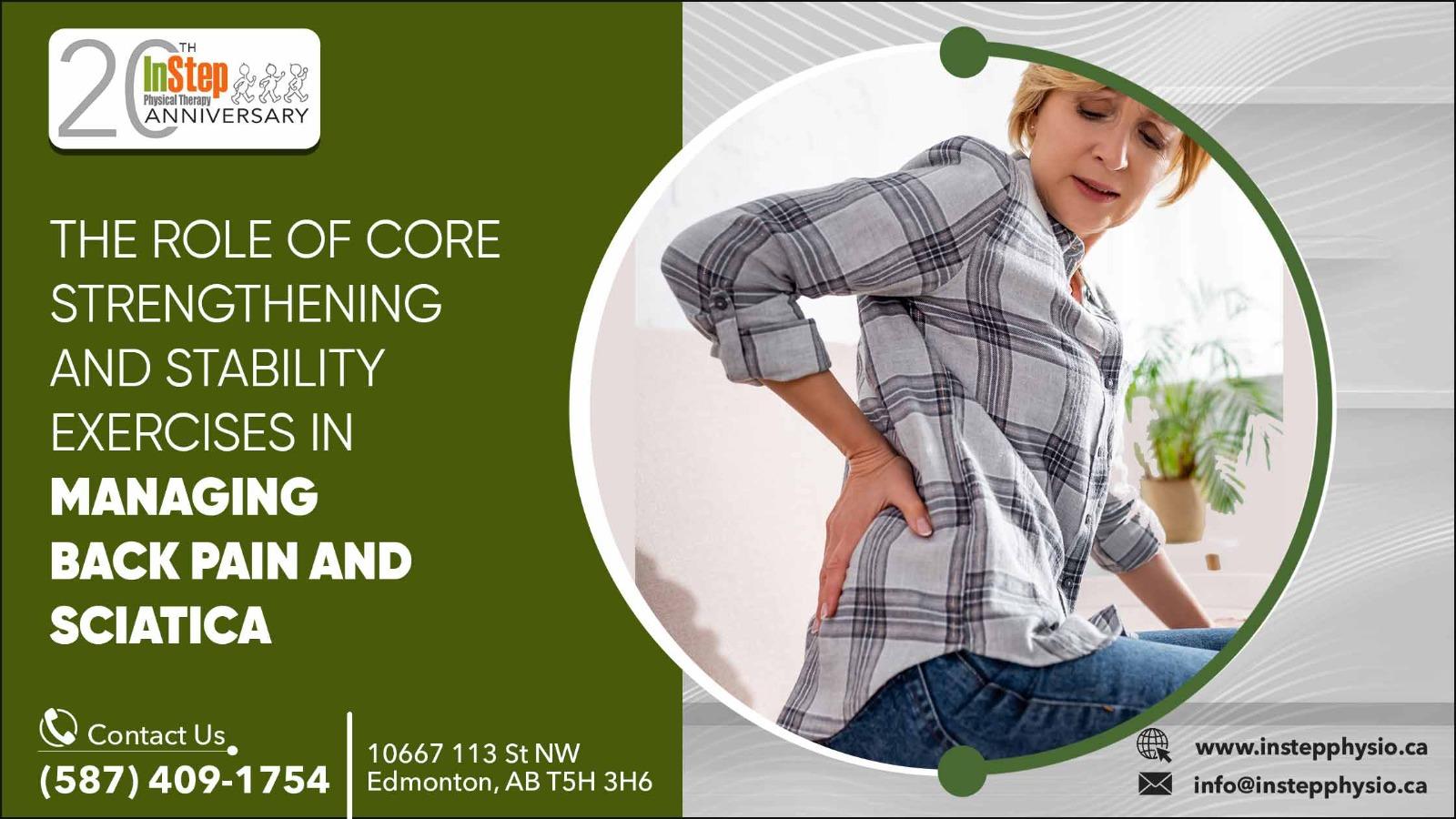In the pursuit of a pain-free life, countless individuals find themselves locked in a struggle with back pain and sciatica. A sedentary lifestyle, poor posture, or an injury can lead to these conditions, causing discomfort and limiting mobility. As one looks for solutions to back pain and sciatica, physiotherapy might emerge as a beacon of hope. At the forefront of alleviating such pain and reintroducing mobility stands core strengthening and stability exercises. Facilities like In Step Physical Therapy Edmonton provide quality care in treating back pain and sciatica. But how exactly does this work?
Understanding the Core's Significance
The core, encompassing the trunk's muscles, plays a pivotal role in maintaining posture balance and ensuring the smooth functioning of everyday movements. A weak core can be the culprit behind undue strain on the back, leading to pain. The core acts as a stabilizer, and when it's not strong, other muscles, such as those in the back, have to compensate. This overcompensation can lead to muscle imbalances and eventual pain.
The core is also intricately linked with the sciatic nerve, the longest in the body, which runs from the lower back through the hips and buttocks down each leg. Sciatica, a condition stemming from the irritation of this nerve, can be debilitating. Strengthening the core can reduce the pressure on the sciatic nerve, thereby alleviating associated pain.
Core Strengthening: More Than Just Abs
When people hear "core exercises," they often picture crunches and sit-ups. However, a comprehensive core workout encompasses much more. Core strengthening targets not just the abdominal muscles but also the obliques, pelvic muscles, diaphragm, and even the muscles along the spine. Engaging these muscle groups provides more stability to the spine, keeping it aligned and reducing the likelihood of sciatica flare-ups.
How Core Strengthening and Stability Exercises Help with Back Pain and Sciatica
Spinal Stability
Core muscles, especially the transverse abdominis and multifidus, work together to stabilize the spine. A strengthened core supports the lumbar (lower back) region, minimizing the stress on the spinal discs and joints. This stabilization can prevent excessive load on the spine, reducing the risk of disc herniation, a common cause of sciatica.
Postural Support
Poor posture is a frequent contributor to back pain. A strong core ensures that the spine is aligned, reducing strain on the back muscles and ligaments. This can prevent postural imbalances that lead to compression of the sciatic nerve.
Pelvic Alignment
The alignment of the pelvis is essential for spinal health. A misaligned pelvis can contribute to sciatic pain by placing uneven stress on the lower back. Core exercises maintain a neutral pelvic position, ensuring that weight and stress are evenly distributed across the spine.
Absorption and Redistribution of Forces
When we move, jump, or carry weight, it's the core that absorbs this force and redistributes it, ensuring that not all the stress goes to the back. Without a strong core, activities like lifting could directly strain the back, increasing the risk of injury or exacerbation of sciatica symptoms.
Reduction of Strain on Sciatic Nerve
By ensuring proper spinal and pelvic alignment and supporting daily movements, a robust core can reduce direct strain or impingements on the sciatic nerve. This means fewer instances where the nerve is pinched or irritated, leading to sciatica.
Enhanced Flexibility and Mobility
While core strengthening exercises focus on building muscle strength, they also improve the flexibility of the surrounding muscles and tissues. Increased flexibility can reduce stiffness in the back, decreasing the instances of muscle spasms or strains that can aggravate sciatic symptoms.
Psychological Benefits
Chronic back pain and sciatica can be debilitating, leading to psychological issues like anxiety or depression. Engaging in a regular core exercise regimen provides a sense of purpose, achievement, and control over one's health, leading to better mental well-being.
Embracing Core Workouts: An Integral Part of Physical Therapy
For those seeking a dedicated approach to managing back pain and sciatica Physical Therapy Edmonton stands as a reliable destination. Physiotherapists understand the anatomy and mechanics of the core, prescribing exercises that cater to individual needs and pain levels. By incorporating a combination of stretches, strength exercises, and stability routines, patients can expect a comprehensive approach to their healing journey.
Practical Tips for Integrating Core Workouts Into Daily Life
Building core strength doesn't always require gym equipment or extensive sessions. Here are some practical ways to integrate core workouts into your daily routine:
Engage the Core Throughout the Day: Whether you're sitting, standing, or walking, try to engage your core muscles consciously.
Practice Planks: This simple exercise can be done anywhere and offers an effective full-core workout.
Seated Exercises: If you work at a desk, engage in seated leg lifts or seated marches.
Stretch Regularly: Incorporate stretches like the cat-cow and child's pose to enhance flexibility and core strength.
Use Fitness Apps: Several apps offer short, effective core workouts that you can follow along with at home or during breaks.
Stay Consistent: Like any fitness goal, consistency is key. Set a routine and stick to it for the best results.
The Core of the Matter
While core strengthening and stability exercises are undeniably beneficial in managing back pain and sciatica, it's crucial to ensure that one is performing these exercises right to reap the benefits and avoid further injury. Seeking guidance like that provided by In Step Physical Therapy Edmonton ensures that one's journey to a pain-free life is safe, effective, and sustainable. After all, at the heart of back pain and sciatica relief lies the strength and stability of our core.
Also read about:
The Role of Sports Physiotherapy in the Management of Overtraining Syndrome in Athletes
Workplace Injury Recovery A Comprehensive Guide to WCB Physiotherapy
Invisible Armor How PPF Safeguards Your Teslas Flawless Finish










